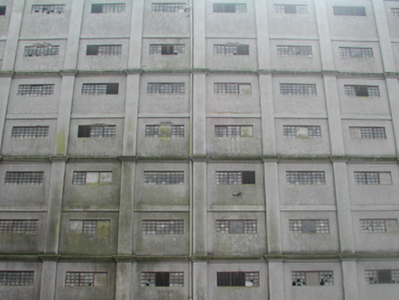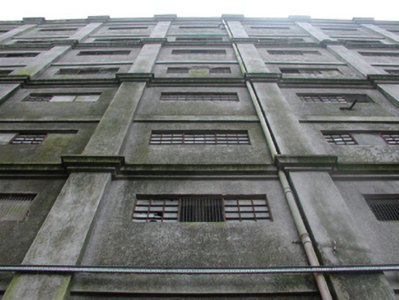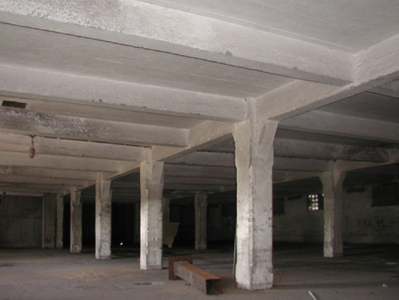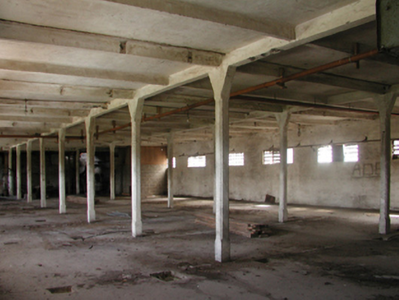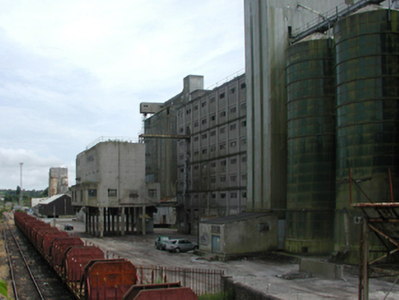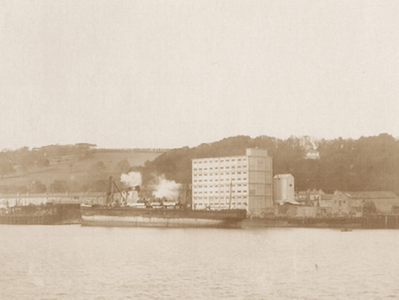Survey Data
Reg No
22900908
Rating
National
Categories of Special Interest
Architectural, Technical
Original Use
Store/warehouse
Date
1900 - 1910
Coordinates
260884, 112857
Date Recorded
16/06/2003
Date Updated
--/--/--
Description
Archival Description [Demolished 2018]: Attached ten-bay (three-bay deep) nine-storey flat-roofed grain store or warehouse, built 1905-6, on a rectangular plan. Now disused. Flat roof not visible behind parapet with concealed rainwater goods retaining cast-iron downpipes. Fine roughcast reinforced concrete walls on rendered chamfered plinth with rendered pilasters supporting "Cavetto"-detailed stringcourses including rendered pilasters (upper floors) supporting "Cavetto"-detailed cornice to parapet. Square-headed window openings with concealed dressings framing steel fittings having square glazing bars. Interior retaining reinforced concrete floors on reinforced concrete beams on reinforced concrete chamfered piers. Set in unkempt grounds.
Appraisal
Archival Appraisal [Demolished 2018]: A grain store or warehouse erected to designs by William Friel (1873-1970) of Waterford representing an important component of the early twentieth-century industrial heritage of County Waterford with the architectural value of the composition, one recalling the Friel-designed "shipping store" (1908) at Westport Quay in County Mayo (see 31308726), confirmed by such attributes as the compact rectilinear plan form; the pioneering construction using the François Hennebique (1842-1921)-patented "ferro-concrete" [reinforced concrete] system; the streamlined pilasters producing a grid-like geometric Classicism; and the parapeted flat roof. A prolonged period of neglect notwithstanding, the form and massing survive intact together with substantial quantities of the original fabric, both to the exterior and to the pillared interior, thus upholding the character or integrity of a grain store of warehouse making an imposing visual statement overlooking the River Suir. NOTE: The grain store or warehouse was occupied by pro-Treaty forces during the Civil War (1922-3) and the uppermost floors carry scars from bullets shot by anti-Treaty forces stationed on the South Quays.

